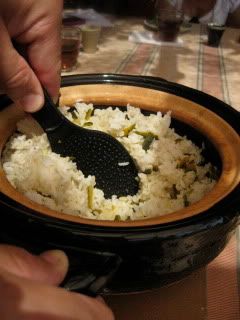
Cold dessert tastes especially nice in the hot summer. I had a bag of natural purple yam flakes from Okinawa (it was a gift from a friend chef in Kyoto), so I made blancmange dessert with it.
This is a vegan dessert...there is no egg or cream, and it tastes really nice.
Okinawa Purple Yam Blancmange
Ingredients
1-2/3 teaspoons powder gelatin
3 tablespoons cold water
2-1/4 cups soymilk
4 tablespoons Okinawa purple yam (sweet potato) flakes
4 tablespoons raw brown sugar
1/2 teaspoon vanilla extract
1 tablespoon rum
some coarse red bean paste
Procedure
1. In a ramekin, combine the cold water and gelatin and let it sit for 5 minutes.
2. In a pot, whisk together the soymilk, yam flakes, sugar, vanilla extract, and soaked gelatin over medium-low heat.
3. Once everything is dissolved and almost boiling, remove from the heat and transfer the mixture to a bowl.
4. Add the rum, and cool down the mixture by whisking while keeping the bowl in a ice bath.
5. When the mixture becomes thicker, divide into 5 cups.
6. Chill in the refrigerator for at least 2 hours or until the mixture becomes nicely jiggly. Garnish with a little mound of red bean paste on top to serve.



















































